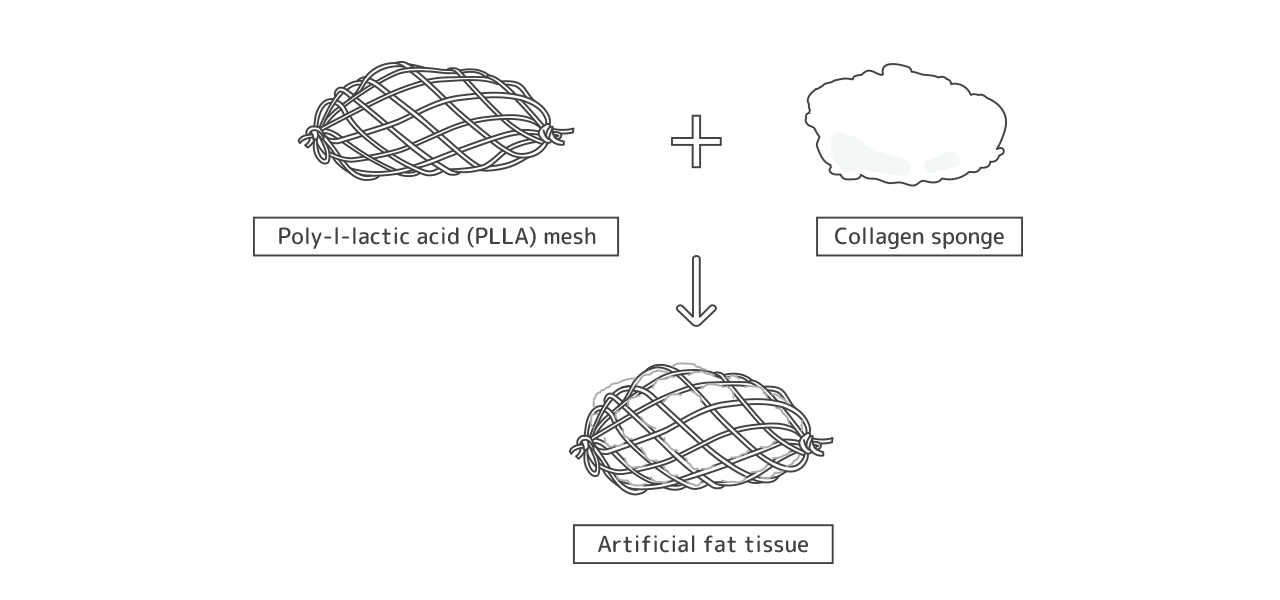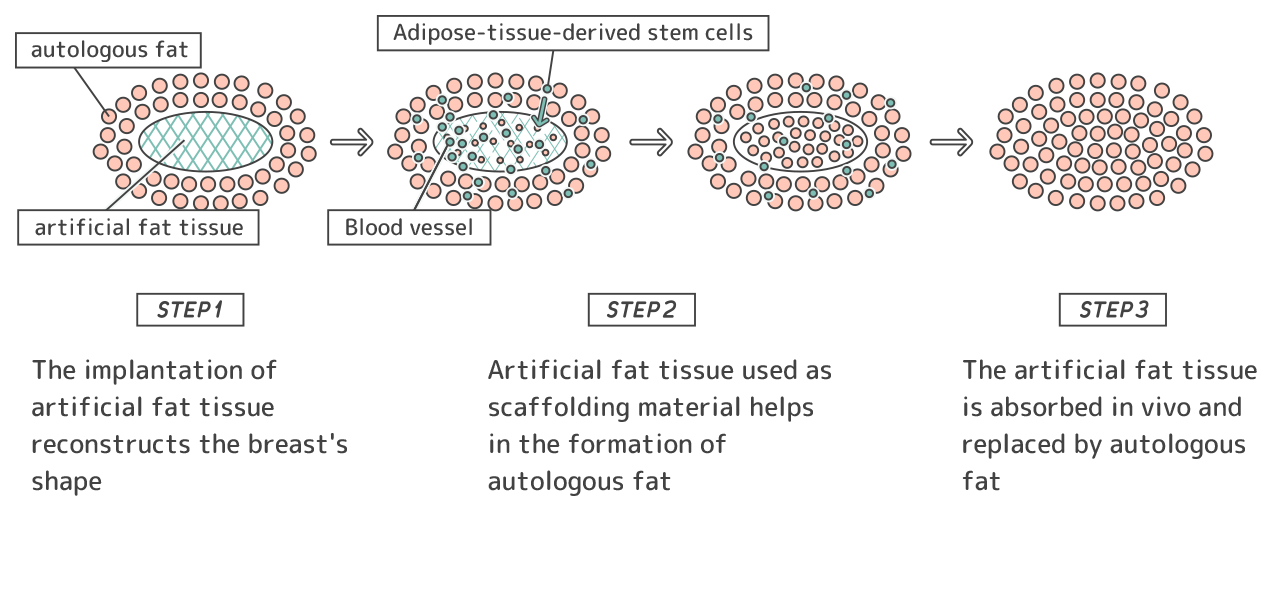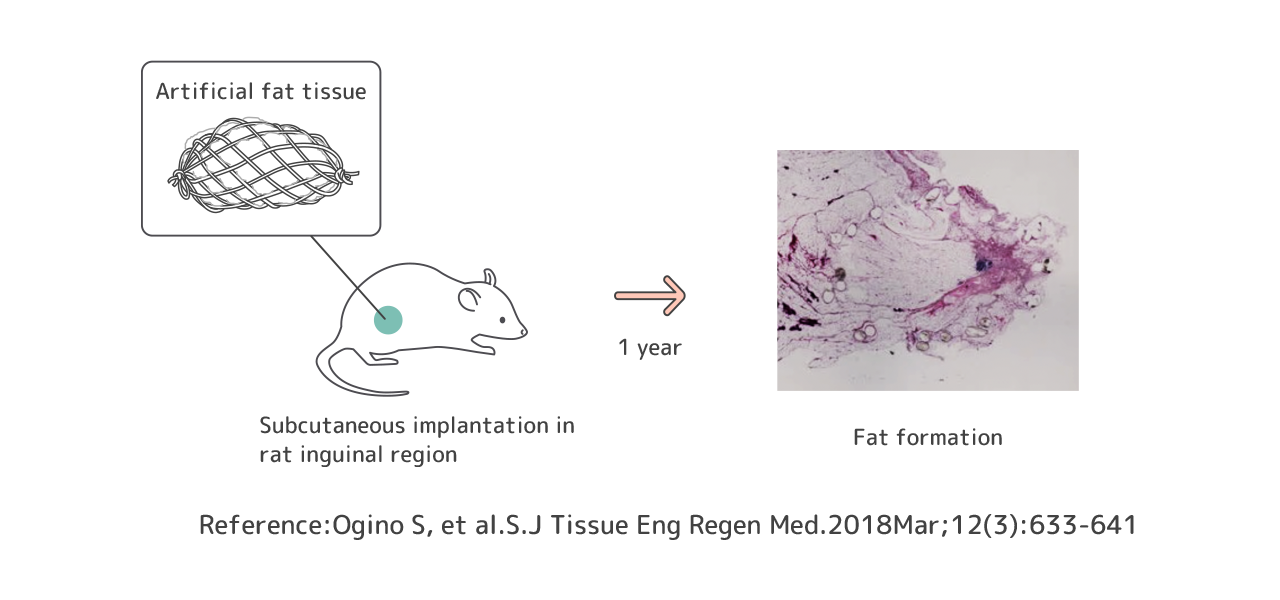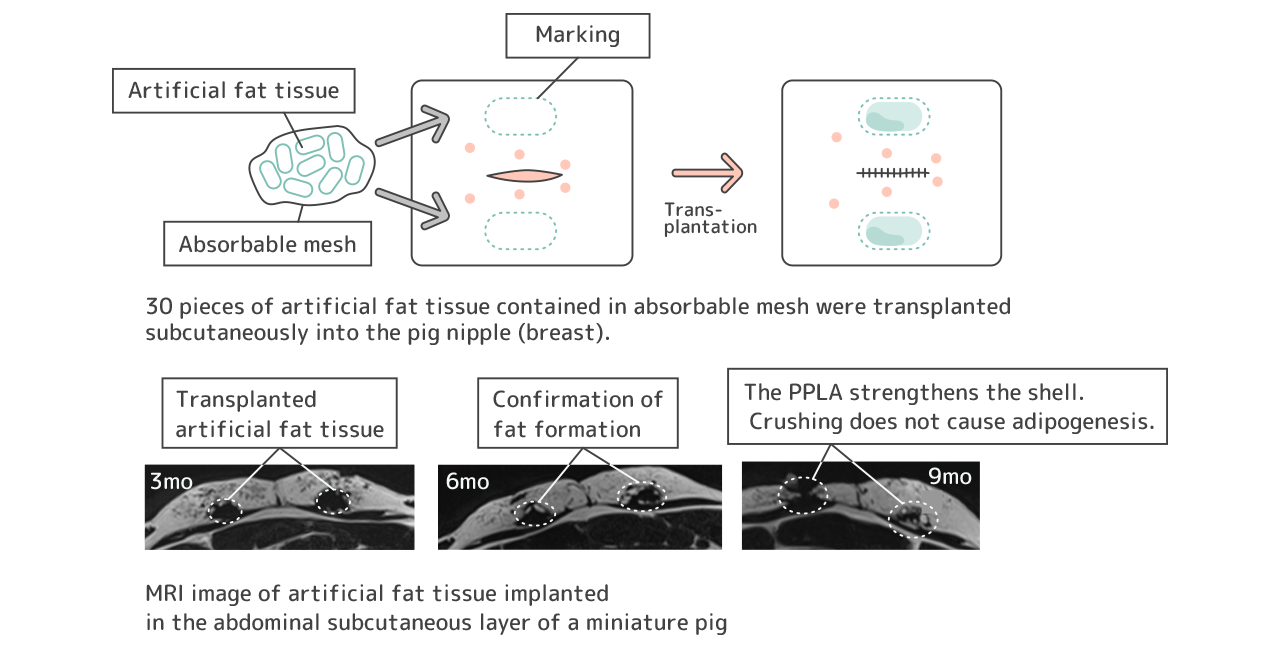We aim to be the first in the world to
commercialize artificial fat tissue that can be
absorbed and digested in vivo, and eventually
replaced by autologous fat, to enable more
flexible breast construction or augmentation.
Challenges with current breast reconstruction
Unnatural shape and feel
Patients requiring breast reconstruction after
breast-conserving surgery are far from satisfied
because the reconstruction does not provide adequate cosmetic repair
to meet their expectations.

Our “artificial fat tissue”, the world’s first
Our artificial fat tissue
Artificial fat tissue is constructed with Poly-l-lactic acid (PLLA) mesh and collagen sponge. Collagen sponge is approved and widely-used as Pernac G Plus in Japan
Pernac G plus, an artificial dermis constructed with collagen, is registered in Japan as #23000BZX00097000, indicated for multilayer skin injuries
Overcome challenges
・Avoids the harvesting and grafting of autologous tissue
・More natural shape and feel
・Safety expected

Breast regeneration by only implanting artificial fat tissue
The implanted artificial fat tissue is eventually absorbed in the body; thus, the breast is expected to have a more natural look and feel.

Reseach & Development
Success in small and medium animal studies
One year after implantation of artificial fat tissue in rats

Two years after implantation of artificial fat tissue in white rabbits

Large-scale animal studies are ongoing
As the final step in the validation of the technology concept, a large-scale animal study in pigs is underway at Shiga University of Medical Science
Granted by the Japan Agency for Medical Research and Development (AMED) Medical Device Division: Advanced Measurement and Analysis Systems Development Program (2019-2021)

